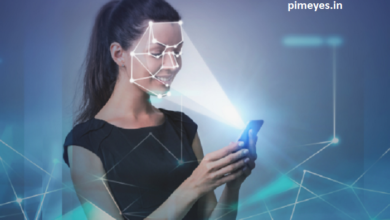Find People by Face: A Comprehensive Guide

Find People by Face used to be laborious, as you usually needed to know their names or where they were when you were looking for them. Still, with the emergence of facial recognition technology, the modern world has moved into the digital age, with many industries—from security to how we connect as people with the online services we use.
Facial Recognition Technology
It is a biometric software application that can uniquely identify or verify a person from a digital image or a video frame based on facial features. The technology is prevalent in security systems and has already found its way into commercial devices such as smartphones and laptops. For anyone considering locating my face, knowing how the technology is formed, what it does, and the extent of its reach are significant in this rapidly developing era. This segment will discuss the technical aspects behind them and the fundamental concepts of the technology that facial recognition software uses to identify individuals.
How Facial Recognition Is Used to Find People
Find people by face involves scanning and analyzing facial features to match images or video footage against a database of known faces. It’s a feature that can be extremely helpful in cases such as missing people searches, implementing security protocols in public places, and simplifying customer verification procedures in the banking and other industries. Exploration of real-world use cases will guide us in comprehending the industry landscape where facial recognition is employed and to what extent it is playing an essential role in enhancing personal or public safety.
The Role of Artificial Intelligence in Enhancing Facial Recognition
AI is crucial in this process, as it polishes facial recognition methods. With years and years of data, AI algorithms learn to become more precise and effective in recognizing facial features. This part explains the role of AI in facial recognition development, mainly relying on machine learning models and various neural networks to boost the software’s ability to search for individuals by face in all types of settings and from all angles.
Privacy Concerns with Facial Recognition
The widespread use of facial recognition technology is a significant privacy concern. Being able to search someone by face, even without their consent, has raised discussions about surveillance and individual freedoms. Here, we assess those dangers, and you may find discussions on privacy rights, overuse by organizations and governments, and what can be done about this powerful technology.
Legal Frameworks Governing the Use of Facial Recognition
Because of the possibility of invasion of privacy, numerous countries have initiated a regulation on the use of facial recognition technologies. This section describes the current legal restrictions on the ability of entities to use facial recognition systems to locate individuals by their faces. Global variations in these legal frameworks and their implications for users and providers of this technology will also be discussed,
Technological Limitations of Facial Recognition
Even with such sophistication, facial recognition is not without its drawbacks. Anything that hinders facial detection, such as inadequate lighting, bad-quality images, glasses, hats, etc. Here, we explore some of the tech limits and hurdles facing developers as they work to upgrade the technology that allows people’s faces to be found accurately.
Ethical Considerations in Facial Recognition
Facial recognition technology— singing a person’s facial image to identify them— often creates ethical questions about its opposing facets. Here is where the ethical dilemma comes in; When algorithms are biased, the AI’s identification may be incorrect, and implications of surveillance may arise. The lessons will emphasize how stakeholders can avoid these ethical traps to maintain responsible and equitable use of the technology.
Future Trends in Facial Recognition Technology
In the future, people may be found by face, and the technology used to search for them is only expected to be a more significant part of our everyday lives. Lastly, the last section covers future trends and directions of development in facial recognition technology, such as its possible smooth integration into day-to-day devices and emerging technologies that can improve identification processes.
Implementing Facial Recognition Responsibly
The challenge for organizations looking to deploy facial recognition technology is to do so responsibly. In this section, we will guide responsible implementation, with best practices for data protection, consent, and transparency. This sets out guidelines for finding somebody using facial recognition that protects user privacy and trust.
Conclusion
Find people by face has limitless potential, like in new facial recognition technology. However, while using these capabilities, we also need to be aware of the ethical, legal, and privacy-related issues involved, which are crucial to maintaining the balance of artificial intelligence and human rights. In this sense, opening the debate to all involved parties will promote the appropriate use of facial recognition technologies within our society.
FAQs
What is facial recognition technology? It is biometric software that identifies or verifies a person from a digital image or video frame by analyzing and comparing facial patterns.
Can facial recognition technology find someone with just one photo? If the photo is clear and the conditions are favorable, facial recognition technology can find someone using just one photo by matching it with existing data.
Is it legal to use facial recognition to find people? The legality of facial recognition varies by country and context, but it is typically governed by specific regulations that address privacy and surveillance concerns.
How can I protect my privacy if my image is used for facial recognition? Individuals can protect their privacy by understanding and exercising their rights under local laws, such as requesting data deletion or opting out facial recognition features in applications.




